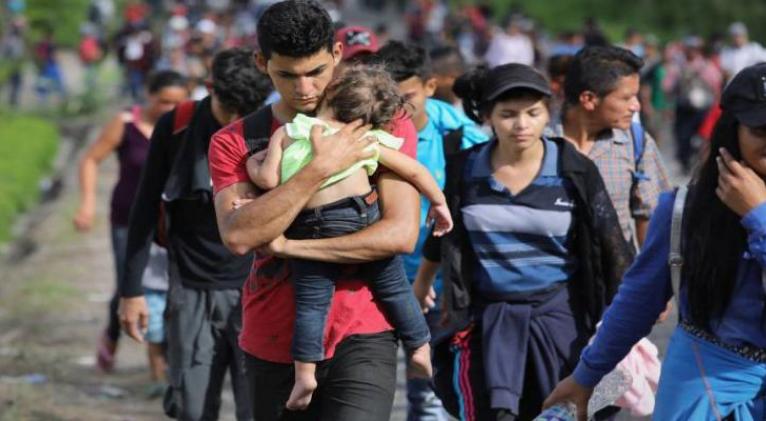Migrant caravan sets out for the U.S. amid COVID-19 concerns
especiales

The first group of Hondurans hoping to reach the United States arrived at the Guatemala border on foot Thursday morning as part of a newly-formed caravan, testing the newly reopened frontier that had been shut thanks to the coronavirus pandemic a month before the U.S. presidential elections.
Guatemalan authorities reported more than 1,000 people had crossed the border from Honduras without proper documentation on their path northward to the United States.
Edwin Omar Molino, a 17-year-old from Cortes, said he was leaving Honduras because he could not find work. He blamed President Juan Orlando Hernandez for running the country into the ground. “Even when you want to find a job, there aren’t any. That’s why we leave our country,” Molino told the Associated Press news agency.
“There’s the pandemic, and it scares me,” he added. But he said he would not be able to help his family get ahead without taking the risk.
Central Americans began travelling in large groups in recent years, seeking safety in numbers and in some cases avoiding the cost of smugglers. Calls for a new caravan to leave on October 1st had circulated for weeks on social media, and unconfirmed posts on social media appear to show groups travelling through Honduras towards the border.
The odds of a large migrant caravan reaching the U.S. border, already low, have grown increasingly slim over the past year. Under pressure from the U.S., Mexico deployed its National Guard and more immigration agents to break up attempted caravans last year.
They dispersed large groups of migrants attempting to travel together in southern Mexico. Actually crossing into the United States legally is virtually impossible now with the pandemic, and entering without documents is as difficult as ever.
The departure of the new group was reminiscent of a migrant caravan that formed two years ago shortly before U.S. midterm elections. It became a hot issue in the campaign, driving anti-immigrant rhetoric.
While the caravans draw attention, they account for a small fraction of the daily migration flow by small groups that pass unnoticed through Central America and Mexico.
The group that arrived at the Guatemala border on Thursday had set out walking the previous night from San Pedro Sula, jumping the gun on their own scheduled departure.
Guatemalan immigration authorities said on Thursday more than 500 were being processed at the Corinto crossing, but most lacked required identification documents. Authorities planned to register those entering the country and offer a voluntary assisted return to those willing to turn back.
AP journalists reported seeing others crossing the border illegally near the formal crossing. A regional agreement allows citizens of Honduras to transit through Guatemala. Guatemalan officials were requiring the migrants to provide documents showing a negative COVID-19 test – even though last week they said they would not require a test for those spending less than 72 hours in the country. Dozens of Guatemalan police and soldiers maintained order.
Those who walked down dark streets on Wednesday night away from San Pedro Sula’s bus station carried small knapsacks, and many wore masks. They appeared to be mostly young men, although there were the occasional small children being pushed in strollers.
Governments throughout the region made it known they were watching on Wednesday. Mexico’s immigration agency said in a statement that would enforce “safe, orderly and legal” migration and not do anything to promote the formation of a caravan.
The U.S. embassy in Honduras said on Twitter that migration to the U.S. was more difficult than ever right now – and more dangerous because of the coronavirus.
Thousands of Hondurans begin their journey to the U.S. as Honduras reels from the pandemic’s economic effect.














Add new comment